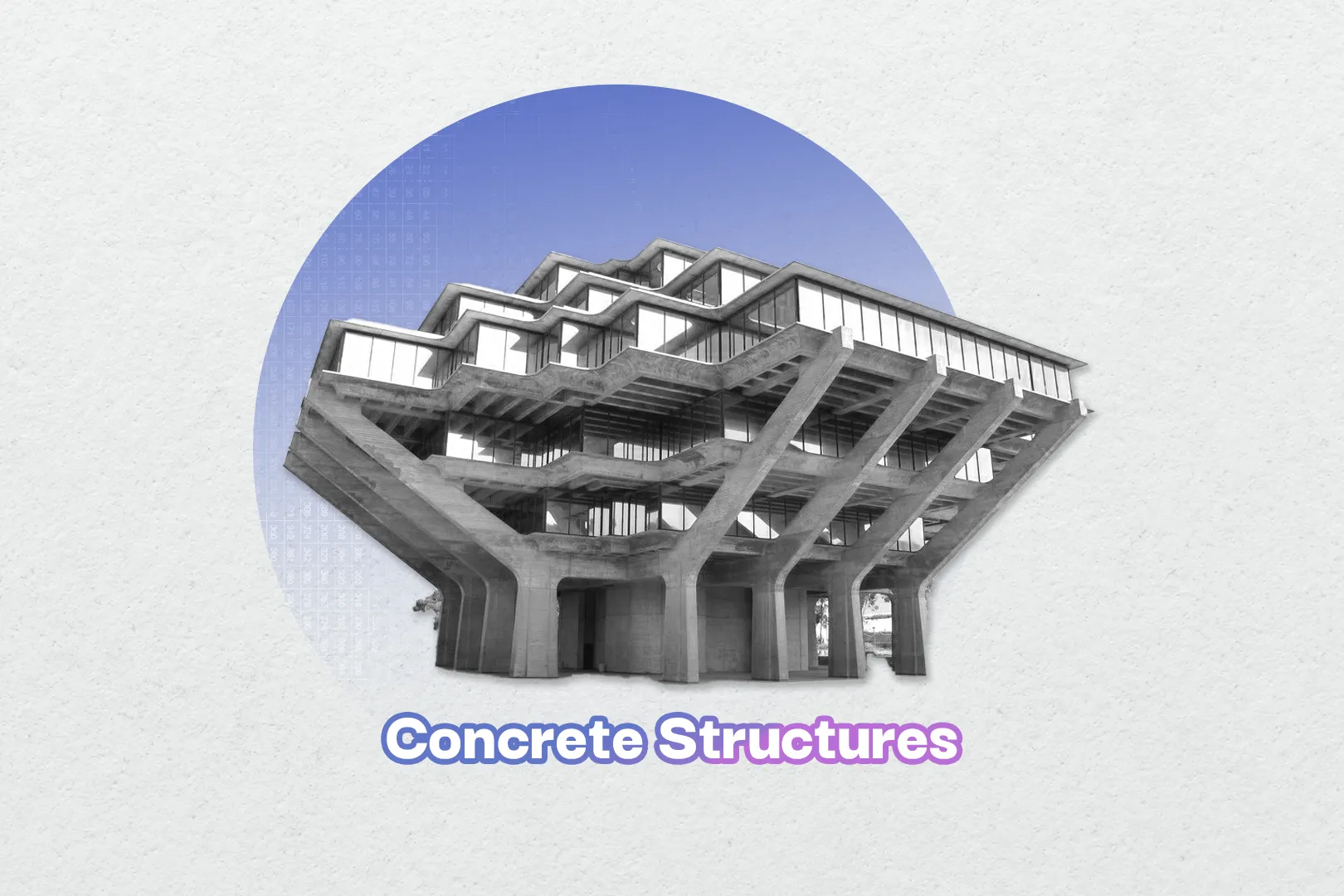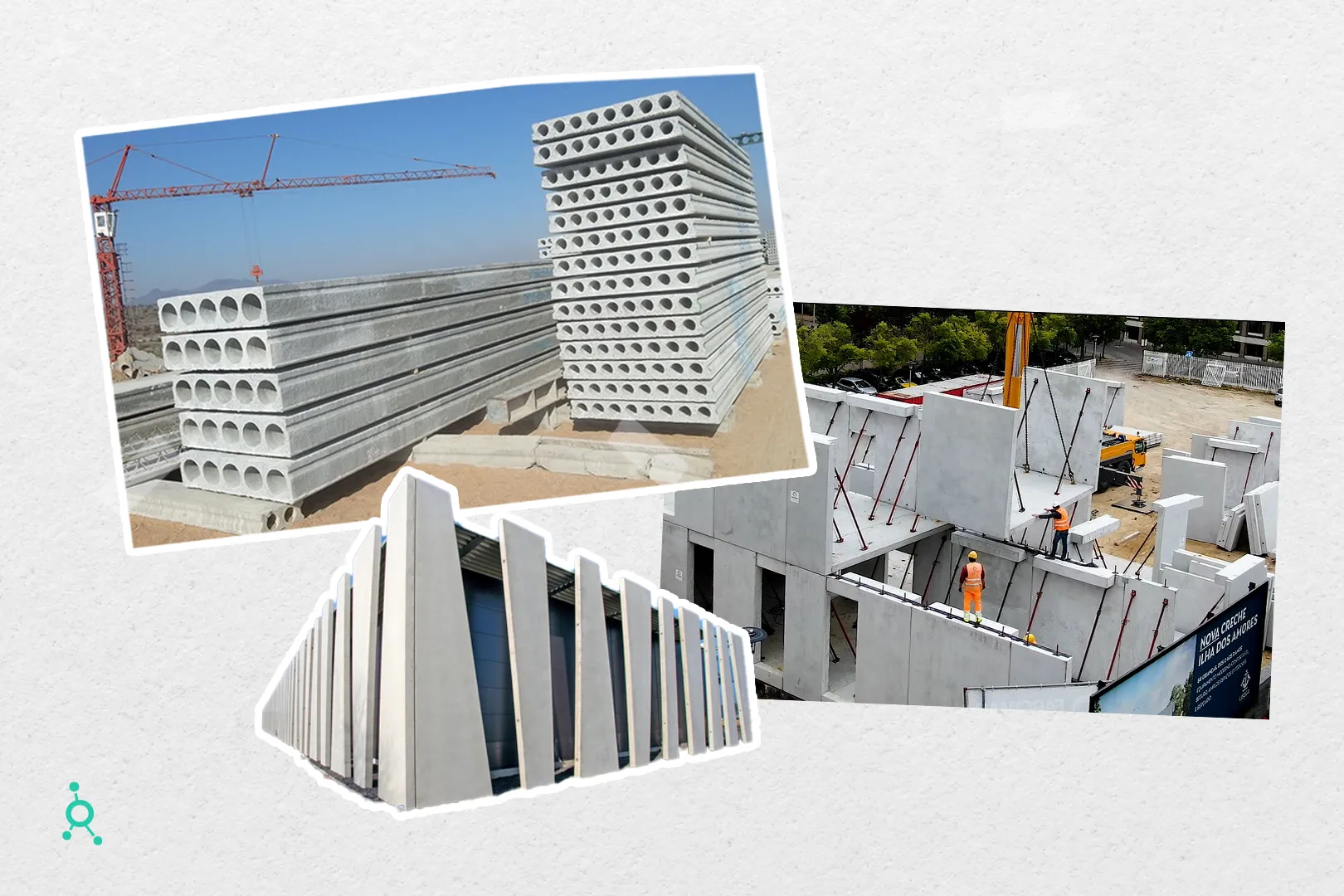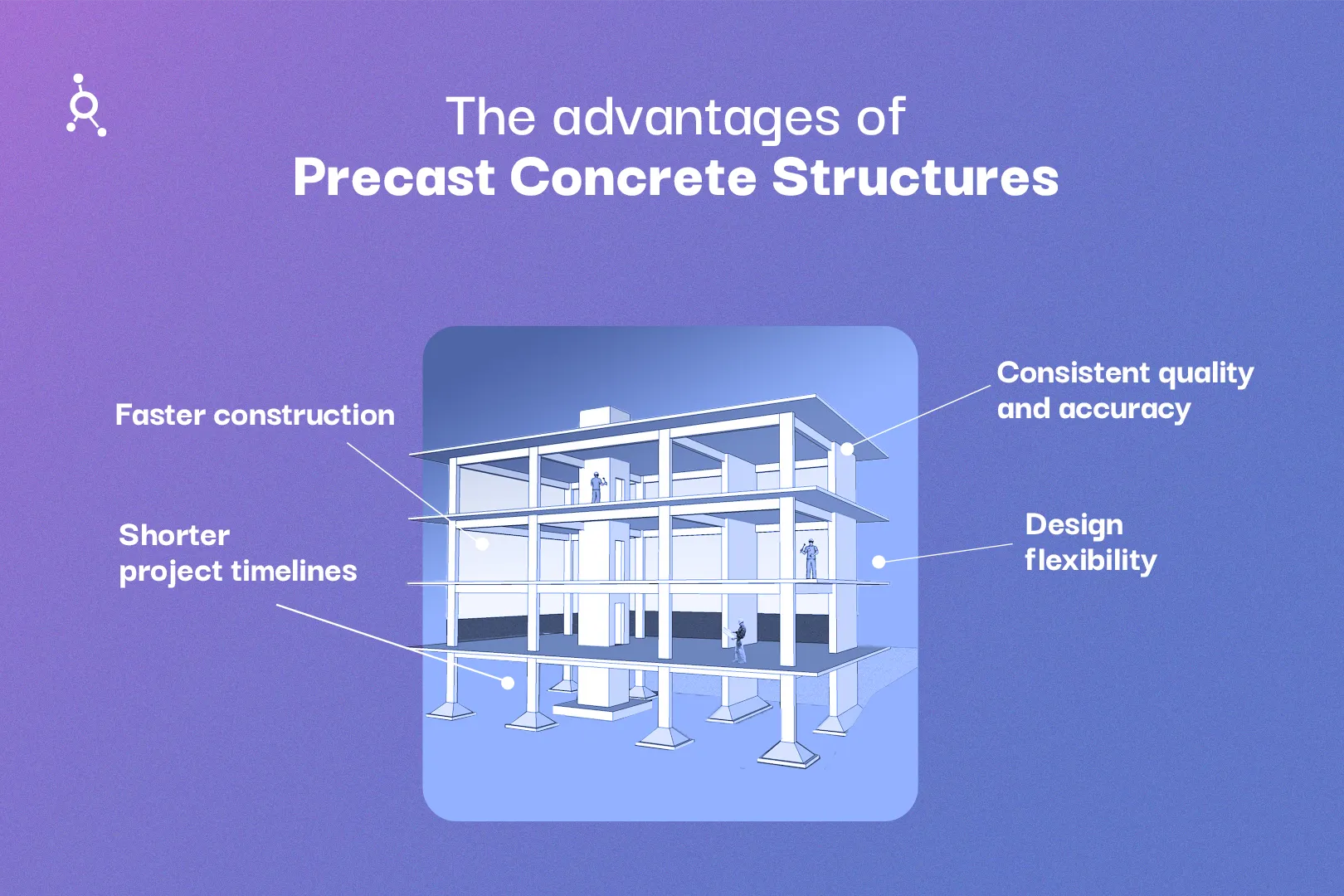Concrete Structures: Old-School, Durable, and Reliable
SHARE POST
Concrete structures have been a cornerstone of modern architecture, providing durability, strength, and versatility in construction projects. Anything from towering skyscrapers to intricate bridges uses concrete.
Today, we will explore the fascinating world of concrete structures. This factors into their importance in the construction industry and the advancements in techniques like structural concrete overlay and repair. We will also dive into the benefits of precast concrete structures and how they contribute to sustainable and efficient building practices.
Whether you’re an architect, engineer, or simply interested in construction, this article will provide valuable insights into this complex world. And, if you want to create perfect concrete structures, we can partner you with all-star architects who can help!
Let’s get started!
Concrete Structures – And Why They Matter
Concrete structures are widely recognized. Their strength, durability, and longevity form the backbone of various architectural marvels, including buildings, bridges, dams, and infrastructure projects. The ability of concrete to withstand immense pressure, resist fire and weathering, and provide structural stability makes it an ideal construction material.
Not Everything Is Oldschool – Concrete Innovations
To enhance the lifespan and performance, we’ve seen the emergence of innovative techniques such as structural concrete overlay and repair.
The structural concrete overlay involves applying a new layer of concrete over an existing surface to improve its strength, durability, and aesthetics. Commonly, this technique rehabilitates deteriorated concrete structures, corrects deficiencies, and extends their service life.
Similarly, structural concrete repair addresses existing issues in concrete structures, such as cracks, spalling, or corrosion. Advanced repair methods, such as fiber-reinforced polymers (FRPs) or epoxy injections, provide practical solutions for restoring structural integrity and preventing further damage.

Yay, Sustainability!
In recent years, the construction industry has witnessed a surge in the use of precast concrete structures. Manufactured off-site and transported to the construction site, offer many sustainability, efficiency, and cost-effectiveness benefits.
Precast concrete structures reduce construction time, minimize material waste, and improve quality control due to their factory-controlled production process. The versatility of precast elements allows for customization and efficient integration of various architectural features. Additionally, precast concrete structures exhibit excellent thermal performance, contributing to energy efficiency in buildings.
Other Sustainable Practices in Concrete Structures
As sustainability becomes a top priority in construction, concrete structures have adapted to incorporate environmentally friendly practices. One notable approach is the use of recycled materials in concrete production. By incorporating recycled aggregates or supplementary cementitious materials, such as fly ash or slag, the environmental impact of concrete production can be reduced, while still maintaining its performance characteristics.
Also, advancements in concrete technology have led to the development of self-healing concrete. This innovative material contains special additives that can repair microcracks within the structure, enhancing its durability and minimizing maintenance requirements. Self-healing concrete not only extends the lifespan of concrete structures but also reduces the need for frequent repairs and the associated carbon footprint.

Technological Advancements – YES!
In the digital era, technology has a crucial role in everything related to concrete structures. Building Information Modeling (BIM) has revolutionized the way projects are planned and executed. By creating a virtual representation of the structure, architects, engineers, and contractors can collaborate more efficiently, identify potential clashes or issues, and optimize the construction process.
Furthermore, the Internet of Things (IoT) has enabled the implementation of smart concrete structures. By embedding sensors within the concrete, real-time data can be collected on factors such as temperature, humidity, and structural stress. This data allows for proactive maintenance, early detection of potential issues, and improved structural performance.
Structural Concrete Repair Matters – Why?
Repair plays a crucial role in maintaining the integrity and longevity of concrete structures. Over time, concrete may develop cracks, spalling, or deterioration due to factors like age, environmental conditions, or structural damage. Timely repair and maintenance are essential to prevent further deterioration and ensure the structural stability of the building.
One common technique for structural concrete repair is the application of a thin bonded overlay. This method, known as TF structural concrete overlay, involves the placement of a new layer of concrete over the existing surface. The overlay provides additional strength, restores the appearance of the structure, and protects it from further damage. TF structural concrete overlay is particularly effective for repairing concrete surfaces in parking garages, bridges, and other heavily trafficked areas.
American structural concrete repair standards and guidelines ensure the quality and safety of repair procedures. These standards outline the requirements for materials, surface preparation, application techniques, and quality control measures. By adhering to these standards and working with experienced professionals, you can ensure that your structural concrete repairs go effectively and meet industry standards.

Precast Concrete Structures for Efficiency and Quality
Precast concrete structures have gained popularity in the construction industry due to their efficiency, quality, and versatility. In this construction method, concrete elements are manufactured off-site under controlled conditions and then transported to the construction site for assembly.
The use of precast concrete offers several advantages. Firstly, it allows for faster construction, as the manufacturing process can be carried out simultaneously with site preparation, shortening project timelines and minimizing disruptions to the surrounding environment. Additionally, precast concrete elements are precisely manufactured, ensuring consistent quality and dimensional accuracy.
Precast also offer design flexibility, as they can be customized to meet specific project requirements. From architectural finishes to unique shapes and sizes, precast elements can be tailored to achieve the desired aesthetics and functionality. Moreover, the durability and strength of precast concrete contribute to the long-term performance and resilience of the structures.
The Way Ahead For Concrete Structures
Innovation and sustainability drive the future of concrete structures. Researchers and engineers are always exploring new materials and construction techniques to enhance the performance and environmental impact of concrete.
One promising area of development is the use of high-performance concrete (HPC) and ultra-high-performance concrete (UHPC). These advanced formulations offer increased strength, durability, and resistance to environmental factors. HPC and UHPC have the potential to revolutionize the construction industry by enabling the construction of taller and more slender structures with reduced material consumption.
Another emerging trend is the integration of renewable energy systems within concrete structures. Solar panels, wind turbines, and other renewable energy technologies can be seamlessly incorporated into the design, allowing buildings to generate clean energy and reduce their carbon footprint.
Furthermore, the concept of smart cities and smart infrastructure is transforming the way we approach concrete structures. Through the integration of sensors, data analytics, and artificial intelligence, concrete structures can become more intelligent and responsive. This technology-driven approach enables real-time monitoring, predictive maintenance, and optimized resource utilization.
BetterPros: Connecting Experts for Concrete Structures
If you collaborate with architectural and engineering professionals, such as those connected through BetterPros, you can ensure the successful design of your concrete structures. These experts bring valuable insights, innovative ideas, and the necessary skills to transform your vision into a reality.
At BetterPros, we connect high-end architectural professionals specialized in concrete structures and related techniques with global companies.

Exploring Design Flexibility
We understand the importance of finding the right experts. Whether you need assistance in conceptualization, design, structural analysis, or project management, our extensive talent pool ensures you have access to the best expertise available.
When designing concrete structures, working with architectural professionals becomes even more crucial. These unique structures require a deep understanding of architectural principles, engineering considerations, and specialized techniques. By collaborating with experts who excel in the field, you can bring your vision to life while ensuring safety, functionality, and aesthetic appeal.
One of the significant advantages of working with BetterPros is the cost-saving aspect. Our architectural outsourcing services allow you to access top-tier talent without the burden of extensive overhead costs. By leveraging our flexible business model, you can reduce project expenses while maintaining high-quality standards. We have a proven track record of helping companies scale their projects while achieving cost savings of up to 60% in under two weeks. This cost efficiency enables you to bring your floating house project to life efficiently and within budget.
At BetterPros, we take a personalized approach to match you with the right experts for your concrete structure project. We understand that each project is unique. Based on your needs, we carefully select professionals with the skills and experience necessary to bring your vision to fruition. This tailored approach ensures that you have the right expertise at your fingertips throughout the entire process, from conceptualization to completion.
Summing Up:
Concrete structures continue to be a driving force in the construction industry, offering durability, strength, and adaptability. With advancements in techniques like structural concrete overlay and repair, as well as the utilization of precast concrete structures and sustainable practices, the potential of concrete is expanding even further.
By collaborating with industry professionals and leveraging technological advancements, you can ensure the successful realization of your concrete structure projects. BetterPros can assist you in finding the right experts with the skills and knowledge to deliver exceptional results.
Concrete structures are functional and can be aesthetically pleasing, environmentally friendly, and economically viable. With the right knowledge and partners, you can unlock the full potential of concrete and contribute to the development of sustainable and resilient cities.
